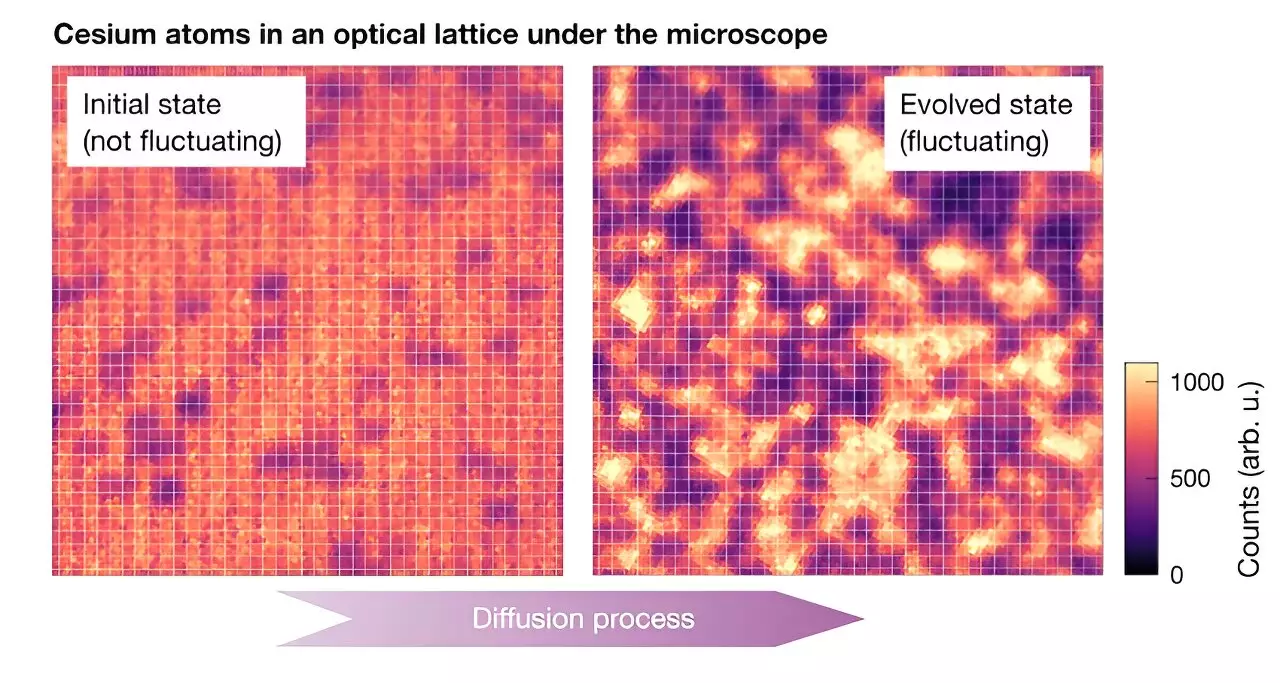Recent advancements in quantum physics have offered profound insights into the complex behavior of large quantum systems. A collaborative study conducted by researchers from Ludwig-Maximilians-Universität, Max-Planck-Institut für Quantenoptik, Munich Center for Quantum Science and Technology (MCQST), and the University of Massachusetts has shed light on the intricacies of equilibrium fluctuations. This study, published in *Nature Physics*, utilized quantum gas microscopy for large-scale simulations, aiming to understand how particles evolve within these intricate systems.
Understanding the dynamics of a multitude of interacting particles in confined spaces presents an immense computational challenge. Julian Wienand, co-author of the study, illustrated this by comparing a large number of particles to a packed box: “You know the physics of these particles and how they interact with each other. So, in principle, you could set up a simulation outputting the movement of every single particle.” However, the sheer quantity of these particles can overwhelm computational resources, making it almost impossible to track each one with precision.
This is precisely where hydrodynamics provides a promising alternative. By treating particles that are chaotic and complex in their interactions as components of a continuous density field, researchers can bypass computational intensity and gain easier analytical insights. The emergence of fluctuating hydrodynamics (FHD) represents a significant evolution in understanding these systems, accommodating fluctuations that occur at microscopic levels and integrating them into a broader theoretical framework.
Fluctuating hydrodynamics extends classical hydrodynamics theory into the quantum realm, enabling the prediction of effects caused by thermal fluctuations in systems comprised of fast-moving particles. The key principle here is that while the individual movements of these particles may be erratic, their collective behavior can often be described using simpler models based on differential equations. This allows physicists to predict the evolution of these systems effectively, focusing on essential properties such as diffusion constants — a critical quantity that summarizes the movement within the chaotic system.
Despite its applicability to classical systems, the extension of FHD to chaotic quantum systems raises important questions. Quantum systems behave fundamentally differently than classical systems due to unique phenomena such as entanglement, which complicates the theoretical landscape. The ability to apply FHD could potentially enable researchers to navigate this complexity, opening new avenues for understanding chaotic quantum phenomena.
Methodology and Observations
The research team utilized a 133Cs (cesium) quantum gas microscope to execute their large-scale quantum simulations. In their approach, they trapped ultracold cesium atoms within an optical lattice, allowing manipulation and imaging at a single atom level. The experiment commenced with the cesium atoms arranged in an excited state before abruptly altering the lattice depth, prompting the particles to diffuse and interact.
By tracking the evolution of fluctuation patterns as the system transitioned towards thermal equilibrium, the researchers were able to validate the applicability of FHD to their experimental setting. They observed how fluctuations scaled over time, supporting the idea that despite the chaotic micro-level interactions, the macroscopic behavior could still be effectively described through relatively simple theoretical models.
Major Findings and Implications for Quantum Research
A significant finding of this study is the demonstration that FHD can characterize chaotic quantum systems both qualitatively and quantitatively. By achieving this in a relatively straightforward experimental setup, the researchers have laid a foundation for future studies exploring more complex quantum systems. The implication is profound: if macroscopic phenomena can emerge from complex microscopic physics in a straightforward manner, this could revolutionize predictions in quantum dynamics, rendering chaotic behaviors less enigmatic.
Additionally, the study revealed that the diffusion constant, a hallmark of equilibrium systems, can be derived even in non-equilibrium settings. This insight bridges fundamental gaps in quantum physics by establishing a cohesive narrative between theoretical predictions and experimental realities.
Future Directions in Quantum Studies
Looking ahead, the researchers plan to expand their quantum simulations beyond this initial framework. They seek to explore questions surrounding the behavior of fluctuations in systems that resist thermalization and to understand higher moments such as skewness and kurtosis. Furthermore, adaptations of FHD to account for complex observables and exotic quantum systems could yield transformational insights into quantum many-body dynamics.
Through ongoing exploration, the field stands on the precipice of exciting developments that promise to deepen our understanding of both fundamental physics and practical quantum technologies. As researchers continue to unravel the mysteries of quantum systems, the implications of their findings will resonate across various scientific and technological domains, paving a path toward a more comprehensive grasp of the quantum world.


Leave a Reply